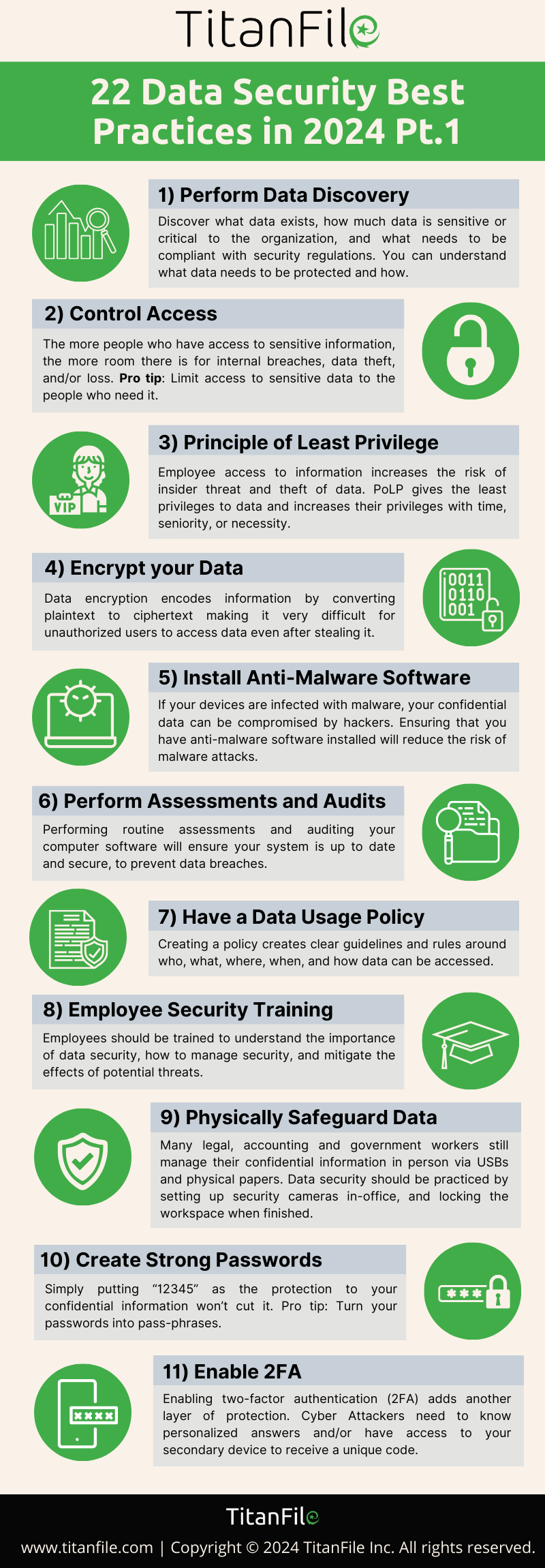Data protection is very important today. It keeps your information safe from hackers. Here are some best practices for data protection.

Credit: umaine.edu
1. Use Strong Passwords
Passwords are like keys to your data. Use strong passwords to keep your data safe.
Tips For Strong Passwords:
- Use at least 12 characters.
- Include numbers, symbols, and letters.
- Mix uppercase and lowercase letters.
- Avoid using common words.
- Change passwords regularly.
2. Enable Two-Factor Authentication
Two-factor authentication adds an extra layer of security. It requires two steps to verify your identity.
How To Enable Two-factor Authentication:
- Go to your account settings.
- Find the security section.
- Select two-factor authentication.
- Follow the instructions to set it up.
3. Keep Software Updated
Software updates fix security holes. Always keep your software updated.
How To Keep Software Updated:
- Enable automatic updates.
- Check for updates regularly.
- Update all devices, including phones and tablets.
4. Backup Your Data
Backups protect your data if something goes wrong. Always backup your data.
Types Of Backups:
- Local backups: Store on an external hard drive.
- Cloud backups: Store on the internet.
Backup Best Practices:
- Backup regularly.
- Use more than one backup method.
- Test your backups to ensure they work.
5. Be Careful with Public Wi-Fi
Public Wi-Fi can be risky. Hackers can see what you are doing. Be careful when using public Wi-Fi.
Public Wi-fi Safety Tips:
- Avoid accessing sensitive information.
- Use a VPN for secure browsing.
- Turn off file sharing on your device.
6. Use Encryption
Encryption protects your data by making it unreadable to others. Use encryption to keep your data safe.
How To Use Encryption:
- Encrypt your device’s hard drive.
- Use encrypted communication tools.
- Encrypt files before sharing them.
7. Educate Yourself and Others
Knowing about data protection helps you stay safe. Teach others about data protection too.
Ways To Educate Yourself:
- Take online courses.
- Read articles and blogs.
- Attend webinars and workshops.
Ways To Teach Others:
- Share what you learn.
- Give presentations.
- Write articles or blogs.
8. Monitor Your Accounts
Regularly check your accounts for suspicious activity. Monitoring your accounts can help you spot problems early.
How To Monitor Your Accounts:
- Check bank statements regularly.
- Review your credit report.
- Set up alerts for account activity.

Credit: www.titanfile.com
9. Be Wary of Phishing Scams
Phishing scams trick you into giving away information. Be careful of emails and messages from unknown sources.
How To Spot Phishing Scams:
- Look for spelling and grammar mistakes.
- Check the sender’s email address.
- Be cautious of urgent requests.
10. Dispose of Data Properly
When you no longer need data, dispose of it properly. This prevents others from accessing it.
How To Dispose Of Data:
- Shred paper documents.
- Use software to wipe hard drives.
- Destroy old devices.
Frequently Asked Questions
What Is Data Protection?
Data protection safeguards personal and sensitive information from unauthorized access, loss, or corruption.
Why Is Data Protection Important?
It ensures privacy, maintains trust, and complies with legal regulations.
How To Secure Sensitive Data?
Use encryption, strong passwords, and access controls to secure sensitive data.
What Are The Key Data Protection Practices?
Implement encryption, regular backups, and access controls.
Conclusion
Data protection is very important. Follow these best practices to keep your information safe. Use strong passwords, enable two-factor authentication, and keep software updated. Backup your data, be careful with public Wi-Fi, and use encryption. Educate yourself and others, monitor your accounts, and be wary of phishing scams. Dispose of data properly when you no longer need it. By following these steps, you can protect your data from threats.



